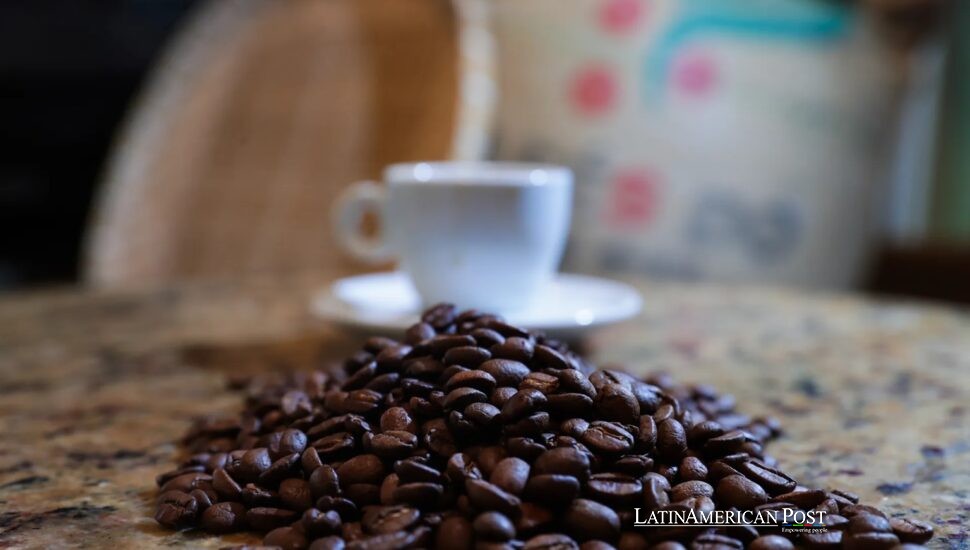Brazil's Coffee Soars Amid Global Market Tensions And Uncertainty

A time of significant disruption has led coffee prices connected to Brazil to reach record levels. The surge affects global commodity markets and raises questions about the long-term output of the planet’s biggest coffee producer. Many observers see this phenomenon as a direct result of severe weather challenges, robust global demand, and frayed logistics chains. Yet despite the steep rise in costs, producers across Brazil believe that the situation may evolve in unexpected ways, especially with the prospects of a more favorable harvest a few years down the road.
Unprecedented Price Surge Threatens Global Coffee Landscape
Following a remarkable 70% jump the previous year, the market for arabica coffee futures in New York has now soared above four dollars per pound—an unprecedented benchmark that reflects a growing anxiety among major coffee retailers and roasters across the globe. This rise has strained relationships between distributors and end consumers as roasters grapple with how much of the price hike should be passed along to retail shelves. Although many coffee aficionados have already felt the pinch in their daily brew, insiders warn that the current price surge could continue for months.
A key reason behind this dramatic increase is tied to the conditions in Brazil, which generally accounts for close to half of the planet’s coffee production. Over the last four years, unusually extreme weather has battered coffee plantations throughout the country’s fertile growing regions. This began with damaging frosts in 2021 that destroyed saplings in many fields and forced farmers to downgrade expectations for their subsequent harvests. When a punishing drought arrived in 2023, it compounded the damage, just as coffee trees struggled to recover from earlier winter cold snaps. Then, a cycle of torrential rains brought by La Niña battered some farms, exposing younger trees to root rot and soil erosion.
All these adversities have led Brazil’s state agricultural agencies to cut production forecasts, indicating that the 2025 harvest might hover around 51.8 million bags—each holding 60 kilograms of coffee—representing a drop of more than 4% compared to the prior season. This relatively modest decline might seem manageable at first glance. Yet, in a market driven by large volumes and tight margins, even a tiny production hiccup in Brazil can create worldwide ripples. As a result, coffee importers and analysts keep a watchful eye on every new piece of data trickling out of the country’s agricultural bureaus.
A relentless desire for coffee exists in many regions. Coffee shops expand very fast across Asia Europe as well as the Middle East which makes experts note an upward trend in overall consumption. The high demand has attracted financial funds that aim to profit from supply problems. The addition of speculative money has lifted coffee prices or turned minor supply concerns into substantial cost increases.
Multiple Factors Driving Production Challenges For Brazil
While climate extremes have played the most visible role in crippling Brazil’s coffee yields, other structural factors also drive the present crisis. One such dynamic is the persistence of logistical constraints in major coffee-producing nations besides Brazil. The second biggest coffee producer faced problems with delivery that limited its supply to Europe’s rising demand. During typical times, Vietnam’s robusta exports work alongside Brazil’s arabica output to give buyers a mix of coffee types. Yet bottlenecks in shipping and internal disruptions combined with Brazil’s own troubles create a perfect storm of scarcity.
Meanwhile, growers in Brazil face the question of how much cost they can feasibly recoup from their own sales. Although the underlying commodity soared upward by more than 100% last year, the retail price in Brazil’s supermarkets rose by only around one-third of that figure. Farmers complain that they continue to shoulder significant production expenses—from fertilizers and irrigation to labor—but have found that roasters and distributors cannot or will not pass the full brunt of the price spike to end consumers. This uneven distribution of burdens fosters tension within the supply chain as exporters, processors, and retailers each try to protect themselves in an unstable environment.
In many coffee-producing regions, there has also been a trend toward modernization and greater mechanization to offset rising labor costs and reduce vulnerability to climate disasters. Smaller family farms, however, find it hard to invest in protective measures such as shade canopies, more advanced irrigation systems, or higher-yield coffee strains. Some local cooperatives help by providing training or micro-loans, but with frosts and drought recurring in close succession, even well-prepared farms can see their yields ravaged.
Amid these hardships, observers highlight that the coffee industry is just one of many agricultural sectors grappling with climate volatility. However, the scale of coffee’s significance— from local livelihood to global beverage staple—ensures that disruptions in Brazil resonate beyond those who till the fields. Caught in the middle are farmers who nurtured high expectations during favorable cycles, only to watch nature sabotage their efforts. Now, with coffee priced at heights unseen for decades, they must cautiously weigh how much to expand production or risk overcommitting resources should the market soon swing downward.
Producers Resist Passing Full Price Burden To Consumers
Although the commodity soared 100% or more, analysts note that roasters in Brazil—like their counterparts in numerous coffee-importing nations—remain hesitant to inflict a similar scale of increases on shoppers. Instead, many grocery aisles saw coffee price tags climb, but not to the same degree as the underlying bean. Industry insiders believe retailers fear losing customers to alternative hot beverages or cheaper coffee varieties if the gap grows too large. That stance, while helpful to consumers’ wallets, places further strain on producers who already bear steeper input costs.
Brazil’s coffee consumption remains robust, however. Even with the more expensive beans, domestic coffee drinking edged up by around 1% last year. Coffee aficionados in Brazil appear willing to absorb some increase, rationalizing that the staple is deeply embedded in daily life. Another subtle factor is that currency fluctuations can play in a producer’s favor: if the Brazilian real remains weak compared to the U.S. dollar, exporters may still profit well from foreign sales even if the local consumption margin is slimmer.
These dynamics open the question: Will consumer habits shift if prices remain sky-high for another season? A few coffee producers outside Brazil have started to mix more robusta beans into their blends as a way to reduce costs from expensive arabica beans. The robusta variety sells at lower prices and offers a more bitter flavor. This change in recipes pushes coffee tastes in fresh directions, which may affect how people enjoy their coffee over time. While particular coffee drinkers remain loyal to the smoother flavor of Brazilian arabica, budget-minded shoppers might accept a compromise in taste if it significantly lowers the cost of their morning cup.
For coffee farmers in the throes of adversity, the current prices should, in theory, help offset the burdens of replanting damaged fields or investing in protective measures for the future. The supply chain problems and doubts about price stability create obstacles for extensive production increases. Some farm owners consider nature’s unpredictable behavior as the key factor in their plans, so quick growth remains hard to forecast.
Vision For The Future And Potential Price Stabilization
Amid intensifying anxieties, many Brazilian coffee industry leaders hold out hope that the spikes in price may stabilize in the coming months if conditions improve. The next major harvest cycle ends in September, after which experts project supply realignments might reduce the upward pressure on global markets. Some forecasters anticipate a “record harvest in 2026,” contingent, of course, on calmer weather patterns and minimal climate shocks. If that scenario materializes, it could usher in a new wave of production that meets the pace of growing world demand, potentially easing the price pinch.
The farmers earned additional income from recent price increases and plan to buy upgraded machinery as well as safety gear. A fresh round of updates could lead to more consistent bean output, which helps maintain steady prices. However, the financial outcome depends on external factors. The market size is vast, yet coffee trades stay vulnerable to fund speculation that amplifies supply-related news effects. Persistent climate unpredictability and logistical uncertainties in other producing nations—like Vietnam or Colombia—could undermine efforts to stabilize supply.
Local officials have weighed in with concerns about how to distribute the benefits of surging coffee values equitably. If only a handful of large-scale farms or exporters capture the windfall, smaller producers might face even deeper disadvantages. The experts support broader cooperative programs to connect small farmers, which gives them better deals when they buy supplies or arrange transport. A beneficial outcome will appear in 2026 if farmers succeed with better work conditions that create a more balanced coffee trade.
Coffee in Brazil means more than just business deals. The drink represents national farming excellence, along with a meaningful bond that reaches all social groups. A regular cup at the corner store or an expert-crafted blend at specialty shops really shows how coffee stays a vital part of Brazil’s daily customs. While some aspects of pricing revolve around global economics, many Brazilians regard coffee as an essential part of their daily identity and remain hopeful that a resolution emerges where producers find sustainability, consumers keep enjoying their beverages at manageable prices, and the entire supply chain adapts to climate challenges.
Also Read: Mexico Embraced Transformation and Unity Dream Under Claudia Sheinbaum
The remarkable growth of coffee production shows how Brazil’s farming success connects to people’s desire for this beloved drink worldwide as the leading coffee grower. Brazil’s choices or challenges in agriculture affect the price of every cup served in cafes across continents. Even if prices moderate soon, the events of the past two years serve as a reminder that no commodity is immune from weather upheavals, logistical snags, and investment speculation. Whether this means lasting changes in how coffee is grown, priced, or consumed remains to be seen, but for now, the coffee realm holds its breath—awaiting the next harvest and the subsequent shift in these historic market trends.




